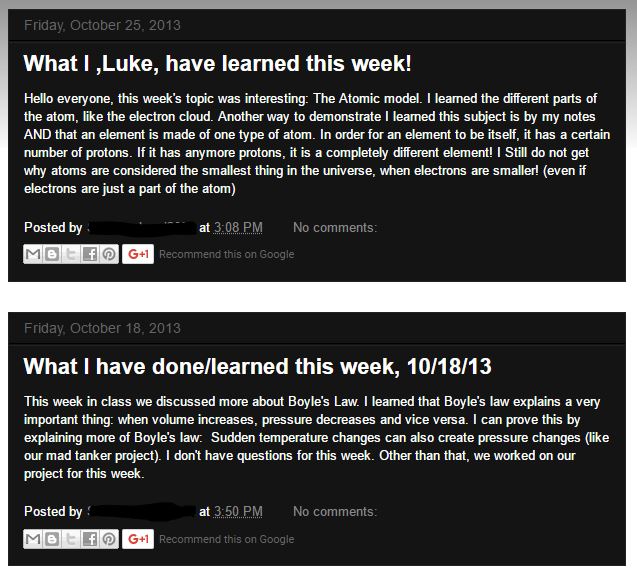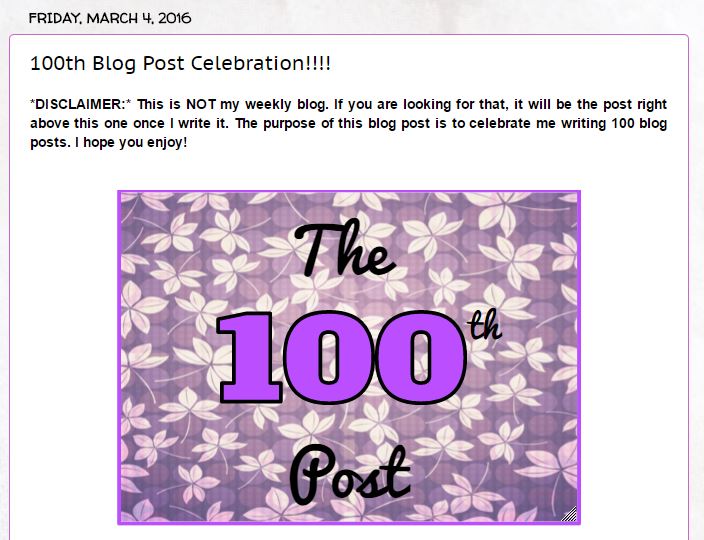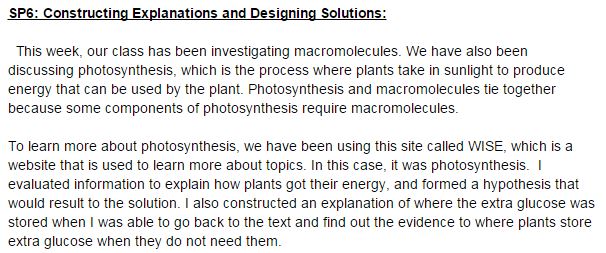I am a 5th and 8th-grade science teacher and at the start of the 2013 school year, I wondered if I could get my students to become productive scientific writers. To find out, I introduced my students to the concept of blogging at the start of 2013, and have had my students experiment with blogging ever since. As a result of this experimentation, I have concluded that by blogging my fifth and eighth-grade students can indeed become prolific content writers, adept at explaining concepts and making their thinking visible. This is our story…
The First Blog Assignment
In September 2013, when I first introduced the idea of blogging in the science classroom, I was met with the usual response. First, excitement at using this “new” thing that nobody else in my district was using, followed quickly by the realization that there were assignments to be written. There were lots of groans and complaints along the lines of “Why do we have to do this?” So much so, that in November I published a post for my students explaining why the blogs were not going away!
At the beginning, the assignment was pretty straightforward: Tell your readers what you learned in class. I was not expecting much more than what I got, which was a simple one paragraph answer and perhaps rhetorical questions about the content. Their blogs then were a simple extension of the notebook, a “substitution” if you will. During the year I experimented with different ideas, adding to and modifying the blog requirements. By the end of that first year, two things became clear: First, aside from weekly writings, blogs could also be used for more thorough reflection on a subject. (I teach using project-based learning, and one of the cornerstones of this type of teaching is the reflective piece.) And second, the blogs had become a space where students were exploring ideas not presented in the classroom. Some students had moved on beyond the assignment to write about scientific concepts that were of interest to them.
[media-credit id=11282 align="alignnone" width="637"] [/media-credit]
[/media-credit]
The Second Set of Blogs
As we started the 2014-2015 school year, I knew that the blogs had to become more rigorous. I wanted them to be a place for weekly reflection as well as a place for students to explore other content related to the class. I no longer simply asked, “What did you learn?,” but, instead, started pushing for a more in-depth commentary. The assignment was the same at all grade levels, and since I gave the option of V-logs (video blogs), most students blogged consistently. Although blogs were a chore to grade, the improvement in their writing was evident. Little did I know that there was still some tweaking to be done.

 [/media-credit]
[/media-credit] [/media-credit]
[/media-credit]